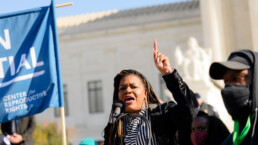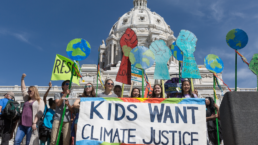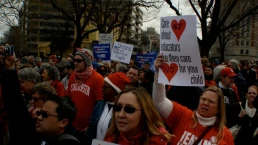While electoral energy among progressive activists is no longer as focused on marquee candidates, there are plenty of victories that progressives can feel optimistic about in 2022.
By Sam Rosenthal, Truthout
When Bernie Sanders’s presidential campaign ended in the spring of 2020, observers wondered what would become of the many thousands of activists who had been part of the Sanders campaigns in 2016 and 2020. On the left, there were concerns that, without a central, unifying candidate, the energy that had amassed around progressive electoral organizing would dissipate. Now, two years beyond the end of the campaign and with midterm elections right around the corner, we can start to make some judgments about the state of progressive electoralism, post-Sanders.

While there are fewer headline-grabbing victories than in the early days of the surge in electoral organizing, the movement to elect progressives at every level of government, in every corner of the country, is still alive and well. To get a clear picture, though, one has to look at the local, as well as the national level.
This year, election results for progressive candidates at the national level have been a mixed bag, at best. This became evident early in 2022: in Texas, Jessica Cisneros failed, again, to defeat anti-abortion Democrat Henry Cuellar in her closely watched congressional primary (and subsequent runoff election). Meanwhile, in Texas’s 35th congressional district, progressive Greg Casar handily won his primary. (He’ll have an easy contest in November and will join Congress in January.) And so it continued throughout the year. In Pennsylvania’s 12th district, Summer Lee narrowly defeated the more moderate (and AIPAC-supported) Steve Irwin. Meanwhile, New York’s 10th congressional district was an absolute train wreck of personal ambition and competing progressive lobbies, allowing the establishment-friendly Daniel Goldman to secure a win with just 25 percent of the vote.
Recent Posts
Politicians Are Betraying Gen Z On Climate
July 10, 2025
Take Action Now While Gen-Zers thrift, knit, crochet, and find other ways to reduce our footprints, Trump and the GOP are greenlighting more climate…
Trump’s Deportation Threat Against Zohran Mamdani Is Shameful
July 10, 2025
Take Action Now In only half a year of Donald Trump’s presidency, he and his allies have turned deportation into an explicitly political threat…
Teachers Union Votes To Cut Ties To The Anti-Defamation League
July 10, 2025
Take Action Now In a momentous vote, the National Education Association voted to cut all ties with the Anti-Defamation League. The reason? “Despite…
2025 War Abolisher Awards Go To Albanese, Nader, Waters
July 9, 2025
Take Action Now The purpose of the awards is to honor and encourage support for those working to abolish the institution of war itself.By World…




